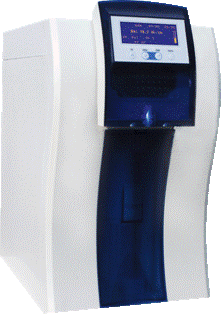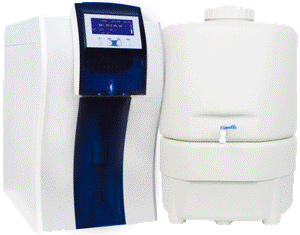How to Choose Pure Water and Ultrapure Water Suitable for Your Laboratory
Likang Marketing Department---Dong Yong
In recent years, many laboratories in universities, research institutions, and other organizations have gradually shifted from using distilled water to pure and ultrapure water machines. This technology has become widespread in higher-level institutions in the eastern region, such as environmental monitoring stations, food and drug inspection offices, disease control centers, quality inspection departments, and agricultural soil and fertilizer testing stations. Many enterprises are also adopting this system, especially in the eastern and central-western regions.
Compared to traditional methods like electric distillation or purchasing water externally, ultrapure water systems offer greater convenience, cost-effectiveness, and consistency in water quality. While most chemical analysts recognize these benefits, many technicians still lack a full understanding of how to choose the right machine. Misunderstandings during purchase are common. To help you make an informed decision, here are some key considerations when selecting an ultrapure water system suitable for your unit.
1. Water Consumption
Most ultrapure water machines on the market produce between 5 to 20 liters per hour, with models above 20 L/h being non-standard. It’s important to select a model based on your actual daily water usage. A general rule is to choose a system that produces at least double your daily requirement. For example, if you need 10 liters per day, go for a 20 L/h system. Choosing a system that's too small can lead to frequent refills, while one that's too large may result in unnecessary costs. If your system produces a lot of concentrated water, consider using a larger storage tank to ensure continuous supply.
2. Water Quality Requirements
National laboratory standards define three levels of water: Grade 1, Grade 2, and Grade 3. Most labs only require two types—Grade 3 (tertiary water) for general cleaning and Grade 1 (ultrapure water) for high-precision analysis such as liquid chromatography or atomic absorption spectroscopy. When choosing an ultrapure water machine, it's crucial to match the water quality to your specific needs. Machines using tap water usually have two outlets: one for purified water (Grade 3) and another for ultrapure water (Grade 1), which typically has a resistance of over 18 MΩ·cm.
Many users are unclear about their exact water quality needs. Although national standards exist, they often lack specific parameters for particular experiments or instruments. Based on experience, the following guidelines can help you make a better choice:
2.1 Experimental Type
Inorganic experiments typically require water with a resistance of over 18 MΩ·cm, while organic experiments need additional removal of organic matter, so total organic carbon (TOC) levels should also be considered. Biological experiments, such as PCR, require sterile water free of bacteria.
2.2 Instrumentation
Different instruments have different requirements. Liquid chromatography systems need water with a resistance of more than 18 MΩ·cm and low TOC. Atomic absorption and environmental monitoring equipment also require similar standards. For life science applications like PCR, sterilization is essential in addition to high resistance and low TOC.
2.3 Source Water Quality
If your source water is already of good quality, inform the manufacturer so they can recommend the most suitable system. Otherwise, they may suggest adding pretreatment stages based on your raw water conditions.
3. Raw Water Quality
Before purchasing an ultrapure water system, it's essential to provide the manufacturer with details about your source water, such as sediment content, hardness, and salinity. Based on this, the system will be configured accordingly—adding pretreatment units for high sediment, softening systems for high hardness, or dual-stage reverse osmosis for high salt content. If the machine uses pre-purified water as its source, you just need to specify your desired water quality and consumption rate.
4. Modular System Selection
Likang–Heal Force offers six modular options tailored to China’s unique water conditions, allowing flexibility to meet various user needs. These modules include enhanced pre-treatment, reverse osmosis, multi-functional water tanks, ion exchange columns, UV lamps (single or dual-wavelength), and membrane filtration (ultrafiltration, microfiltration, and terminal filters). For instance, if your source water has a conductivity above 400 μS/cm, you’ll need enhanced pretreatment. For IVF applications, microfiltration and ultrafiltration along with dual-wavelength UV lamps may be necessary.


Full-arch Teeth Whitening Light
Full-Arch Teeth Whitening Light,Teeth Whitening Light,Blue Light Teeth Whitening,Teeth Whitening Led Light
Rolence Enterprise Inc. , https://www.rolencedent.com